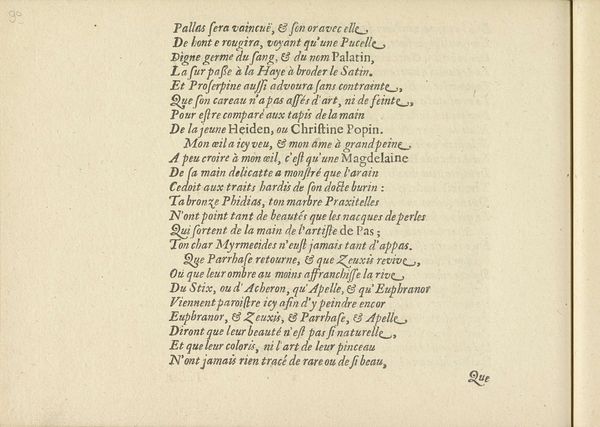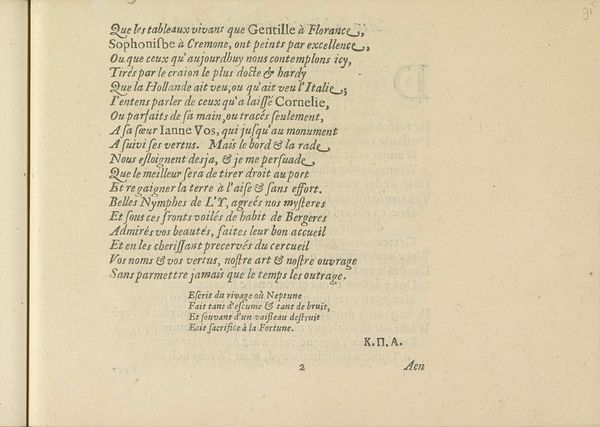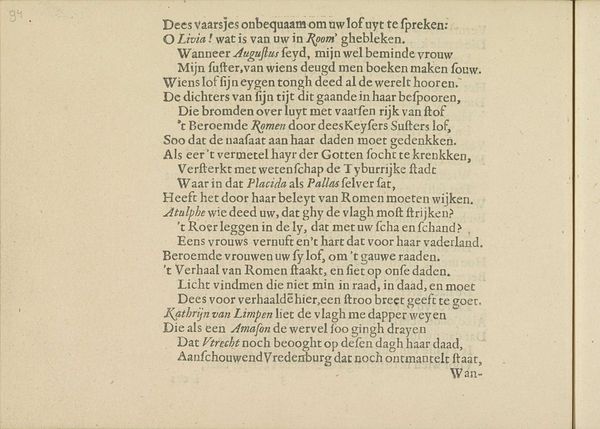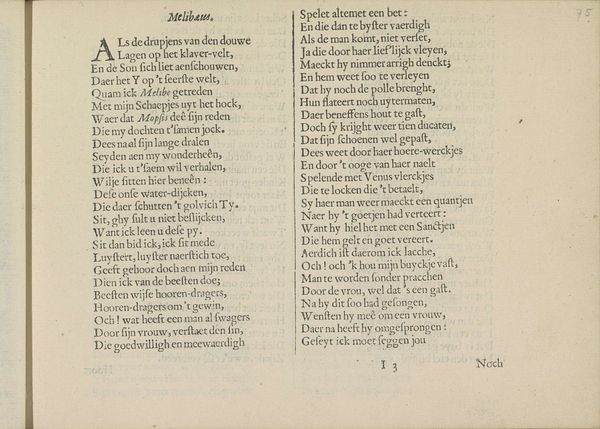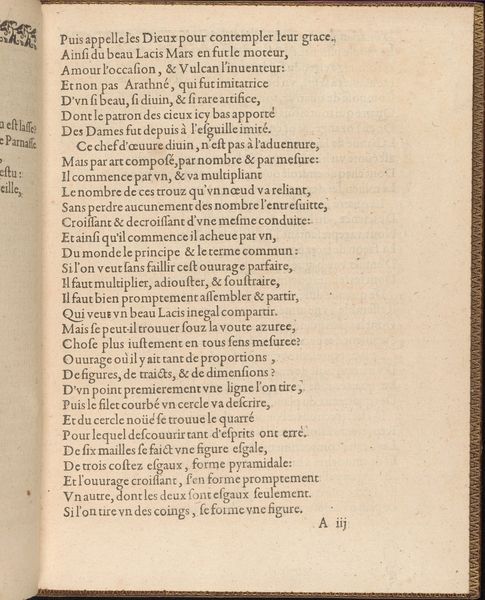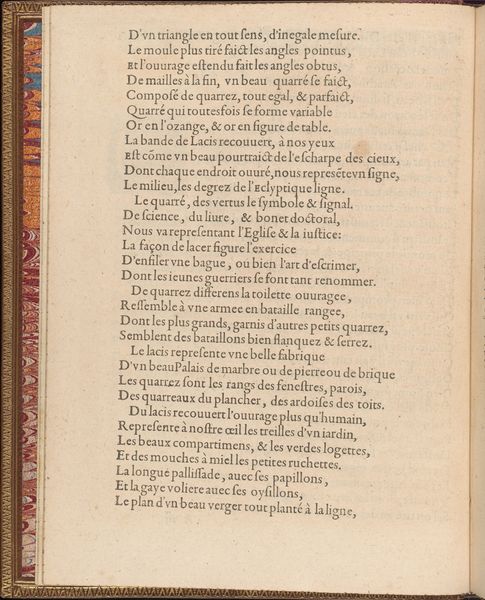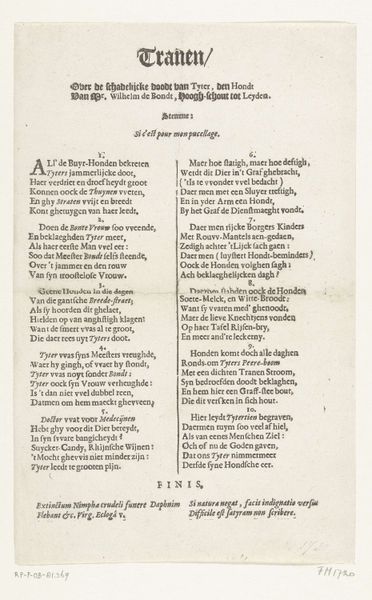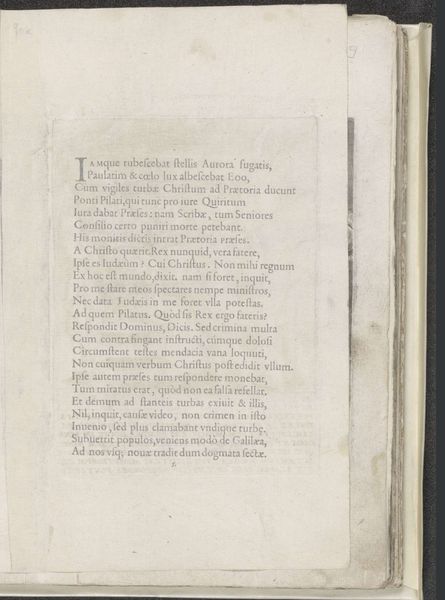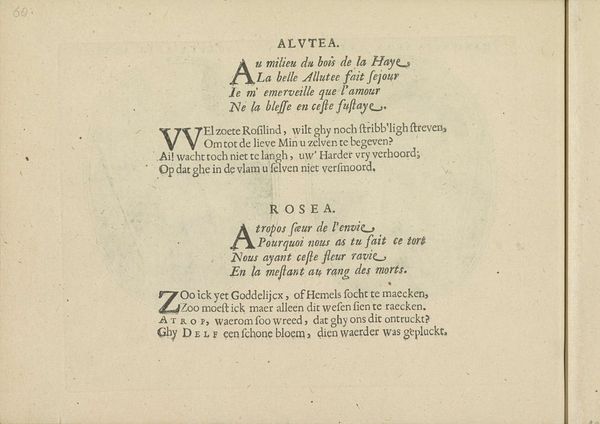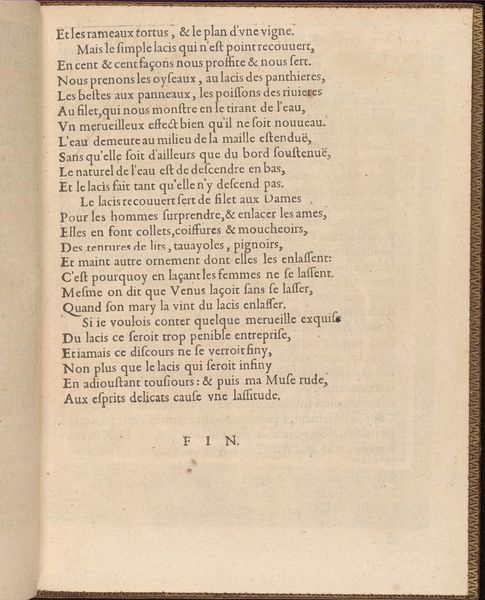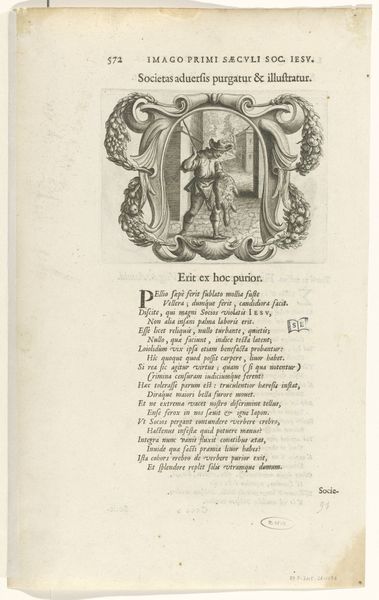
print, paper, typography, engraving
#
baroque
# print
#
paper
#
typography
#
engraving
Dimensions: height 140 mm, width 190 mm
Copyright: Rijks Museum: Open Domain
Editor: So, this is a page of typography, "Franstalig gedicht op de Nimfen van de Amstel, pagina 3" by Crispijn van de Passe II, dating to 1640. It's an engraving on paper and currently held at the Rijksmuseum. The poem is intriguing; it gives the sense of historical reflection and, perhaps, a longing for the past, given that antiquity is specifically mentioned. What historical insights can you offer based on your interpretation? Curator: Well, this engraving speaks volumes about the cultural climate of 17th-century Amsterdam. The presence of a French poem dedicated to the nymphs of the Amstel points towards a culturally diverse and sophisticated audience. Amsterdam was a hub of international trade and intellectual exchange. What political message is revealed in contrasting antiquity with its present time? Editor: Perhaps it suggests a critique of contemporary society? Or could the reference to Elizabeth of England signify more about Anglo-Dutch relations at the time? Curator: Precisely! And note how figures like Elizabeth and references to Rome itself act as powerful political symbols. These are deployed to construct a specific narrative of power and influence. We might ask ourselves, why frame Amsterdam through the lens of these foreign and historical contexts? Who is the poem *really* meant for, and what is its political agenda? Editor: That's fascinating. I hadn’t thought of it as constructing a particular view. I just saw the historical reference. It reframes my perspective completely, thinking about it being more directed than simply historical nostalgia. Curator: Yes. So this isn’t just about artistic or literary value; it’s about understanding the social and political role such imagery and texts played within the Dutch Golden Age, how such cultural products reinforce and negotiate existing power structures. Editor: So interesting! I now appreciate that even what appears as simply a poem can have significant cultural weight and political intent, it will impact my perspective in future study.
Comments
No comments
Be the first to comment and join the conversation on the ultimate creative platform.

